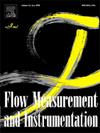新型双节流通道球形阀芯30 MPa背压阀的流体动力学数值分析
IF 2.3
3区 工程技术
Q2 ENGINEERING, MECHANICAL
引用次数: 0
摘要
碳中和技术和可再生能源技术的快速发展,对高压流体控制系统提出了更高的要求,同时也为高性能背压阀创造了多样化的应用场景。典型的应用包括用于绿色储氢和运输的耐压管道系统,以及在极端压力下处理超临界二氧化碳。本研究提出了一种新型背压阀,采用红宝石制成的球形阀芯和双节流通道,解决了传统背压阀采用锥形、圆柱形或弹簧隔膜阀芯/压力调节机构的局限性。创新的设计有效地解决了传统反压阀在高压环境下经常遇到的不兼容、长期泄漏风险和机械干扰问题。基于实验验证的数值模型,揭示了进口压力、最大流速和最大湍流动能与阀门开度之间的关系。结果表明,当阀门开度为0.39 mm时,背压可达30 MPa,在2 ~ 30 MPa的进口压力范围内具有良好的适用性。另外,当阀门开度小于6mm时,阀腔内出现压力抑制。流固耦合分析表明,在峰值压力集中的阀座边缘处,最大应力达到192.54 MPa,导致变形4.85 ×10−3 mm。最后,对红宝石、316级不锈钢、氧化锆和氮化硅陶瓷制成的阀芯进行了比较,结果表明,所有材料都满足背压调节要求,其中红宝石具有最佳的经济效益。本文章由计算机程序翻译,如有差异,请以英文原文为准。
Numerical analysis of fluid dynamics in a novel 30 MPa back pressure valve with dual throttling channels and a spherical valve core
The rapid development of carbon neutrality and renewable energy technologies has imposed higher demands on high-pressure fluid control systems, while simultaneously creating diversified application scenarios for high-performance back pressure valves. Typical applications include pressure-resistant pipeline systems for green hydrogen storage and transportation, as well as for handling supercritical carbon dioxide under extreme pressures. This study proposes a novel back pressure valve featuring a ruby-made spherical core with dual-throttle channels, which addresses the limitations of conventional back pressure valves employing conical, cylindrical, or spring-diaphragm valve cores/pressure-regulating mechanisms. The innovative design effectively addresses the incompatibility, long-term leakage risks, and mechanical interference often encountered by traditional backpressure valves in high-pressure environments. The relationship between inlet pressure, maximum flow velocity, and maximum turbulent kinetic energy with valve opening were revealed based on experimentally validated numerical model. The results indicate that with a valve opening of 0.39 mm, the back pressure can reach up to 30 MPa, demonstrating excellent applicability across an inlet pressure range of 2–30 MPa. Additionally, when the valve opening is less than 6 mm, pressure suppression occurs within the valve chamber. Fluid-structure interaction analysis reveals that the maximum stress, the valve seat edge under peak pressure concentrated, reaches 192.54 MPa, leading to a deformation of 4.85 mm. Finally, a comparison of valve cores made from ruby, 316-grade stainless steel, zirconium oxide, and silicon nitride ceramics shows that all materials meet the back pressure regulation requirements, with ruby offering the best economic efficiency.
求助全文
通过发布文献求助,成功后即可免费获取论文全文。
去求助
来源期刊

Flow Measurement and Instrumentation
工程技术-工程:机械
CiteScore
4.30
自引率
13.60%
发文量
123
审稿时长
6 months
期刊介绍:
Flow Measurement and Instrumentation is dedicated to disseminating the latest research results on all aspects of flow measurement, in both closed conduits and open channels. The design of flow measurement systems involves a wide variety of multidisciplinary activities including modelling the flow sensor, the fluid flow and the sensor/fluid interactions through the use of computation techniques; the development of advanced transducer systems and their associated signal processing and the laboratory and field assessment of the overall system under ideal and disturbed conditions.
FMI is the essential forum for critical information exchange, and contributions are particularly encouraged in the following areas of interest:
Modelling: the application of mathematical and computational modelling to the interaction of fluid dynamics with flowmeters, including flowmeter behaviour, improved flowmeter design and installation problems. Application of CAD/CAE techniques to flowmeter modelling are eligible.
Design and development: the detailed design of the flowmeter head and/or signal processing aspects of novel flowmeters. Emphasis is given to papers identifying new sensor configurations, multisensor flow measurement systems, non-intrusive flow metering techniques and the application of microelectronic techniques in smart or intelligent systems.
Calibration techniques: including descriptions of new or existing calibration facilities and techniques, calibration data from different flowmeter types, and calibration intercomparison data from different laboratories.
Installation effect data: dealing with the effects of non-ideal flow conditions on flowmeters. Papers combining a theoretical understanding of flowmeter behaviour with experimental work are particularly welcome.
 求助内容:
求助内容: 应助结果提醒方式:
应助结果提醒方式:


